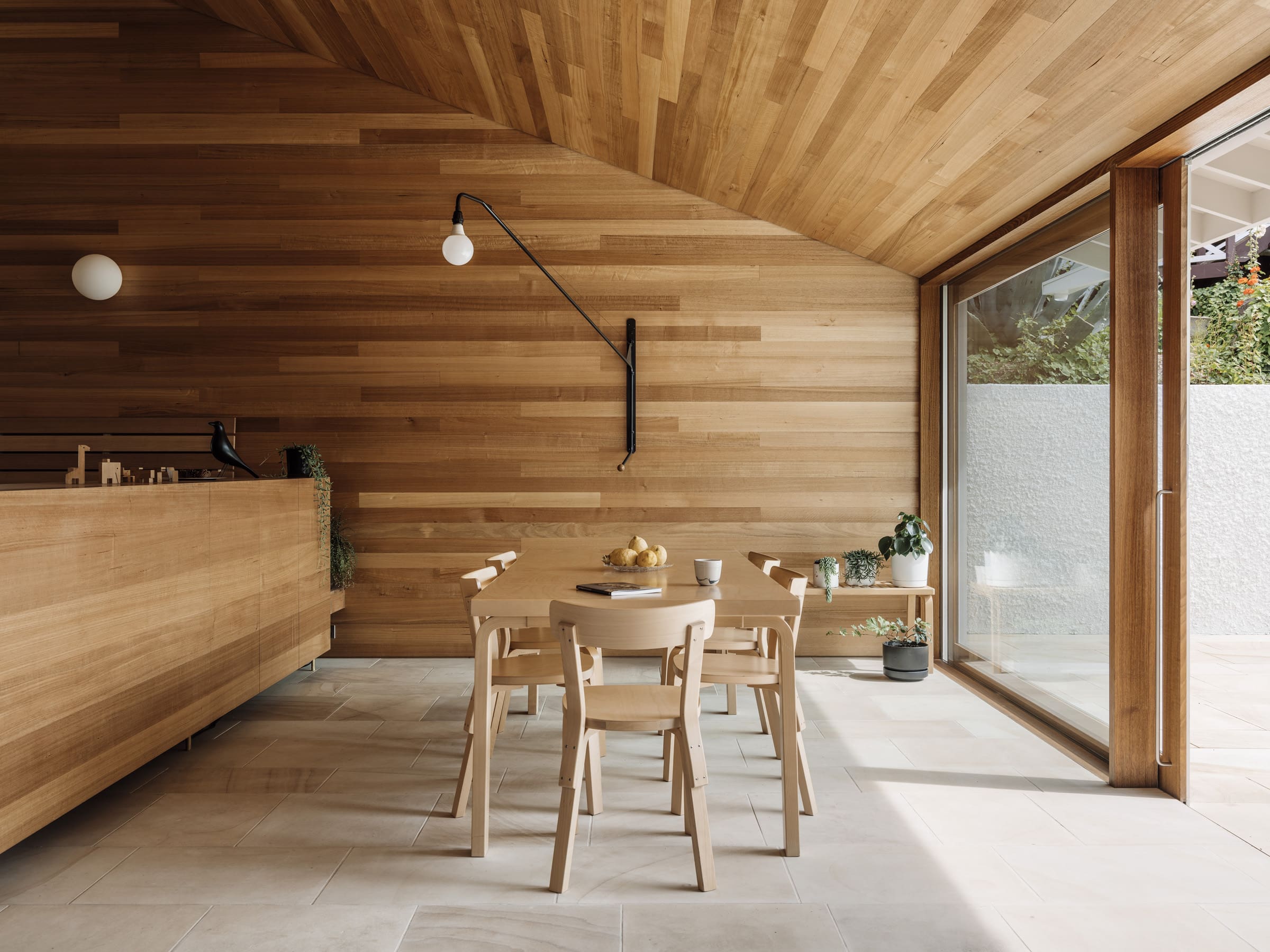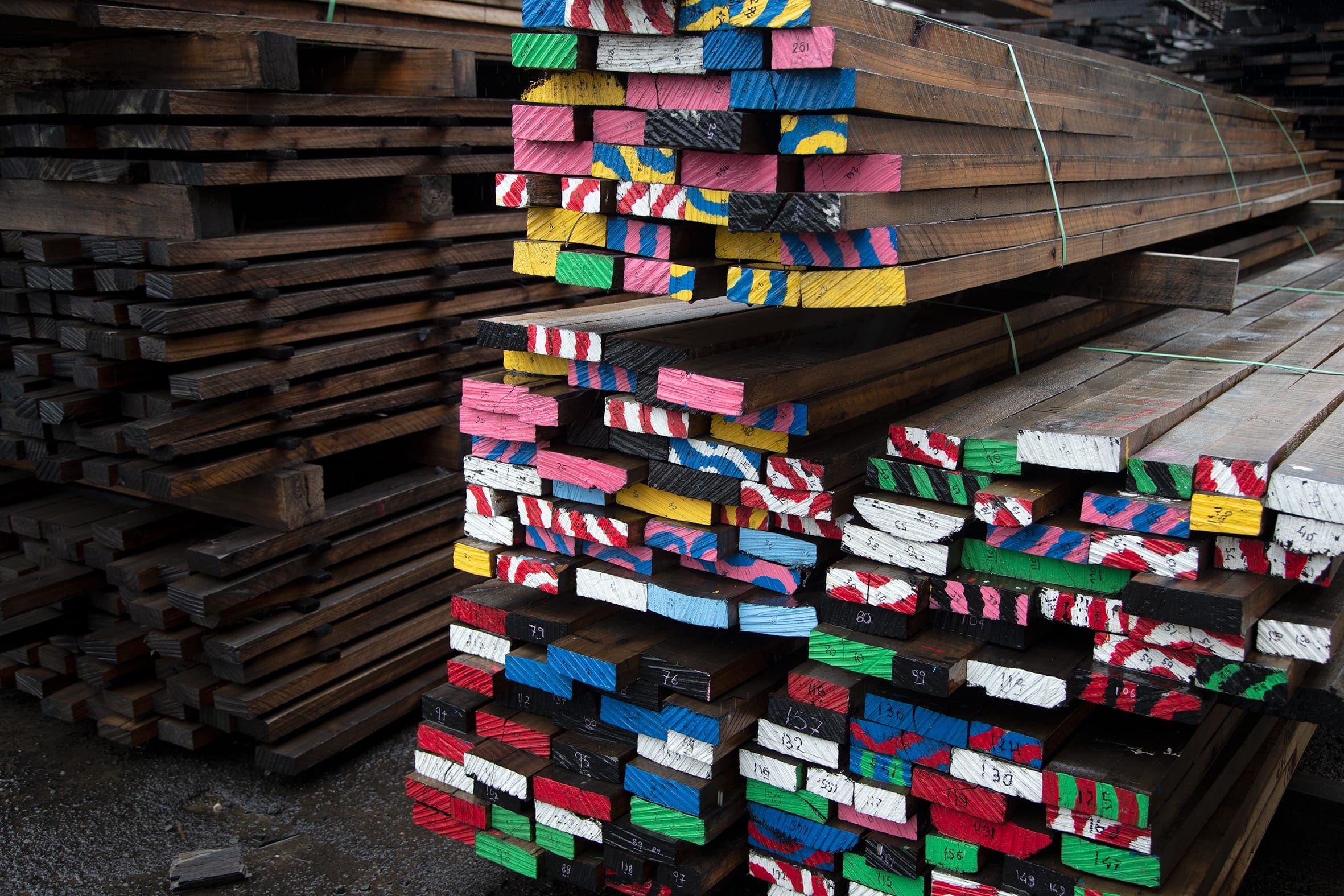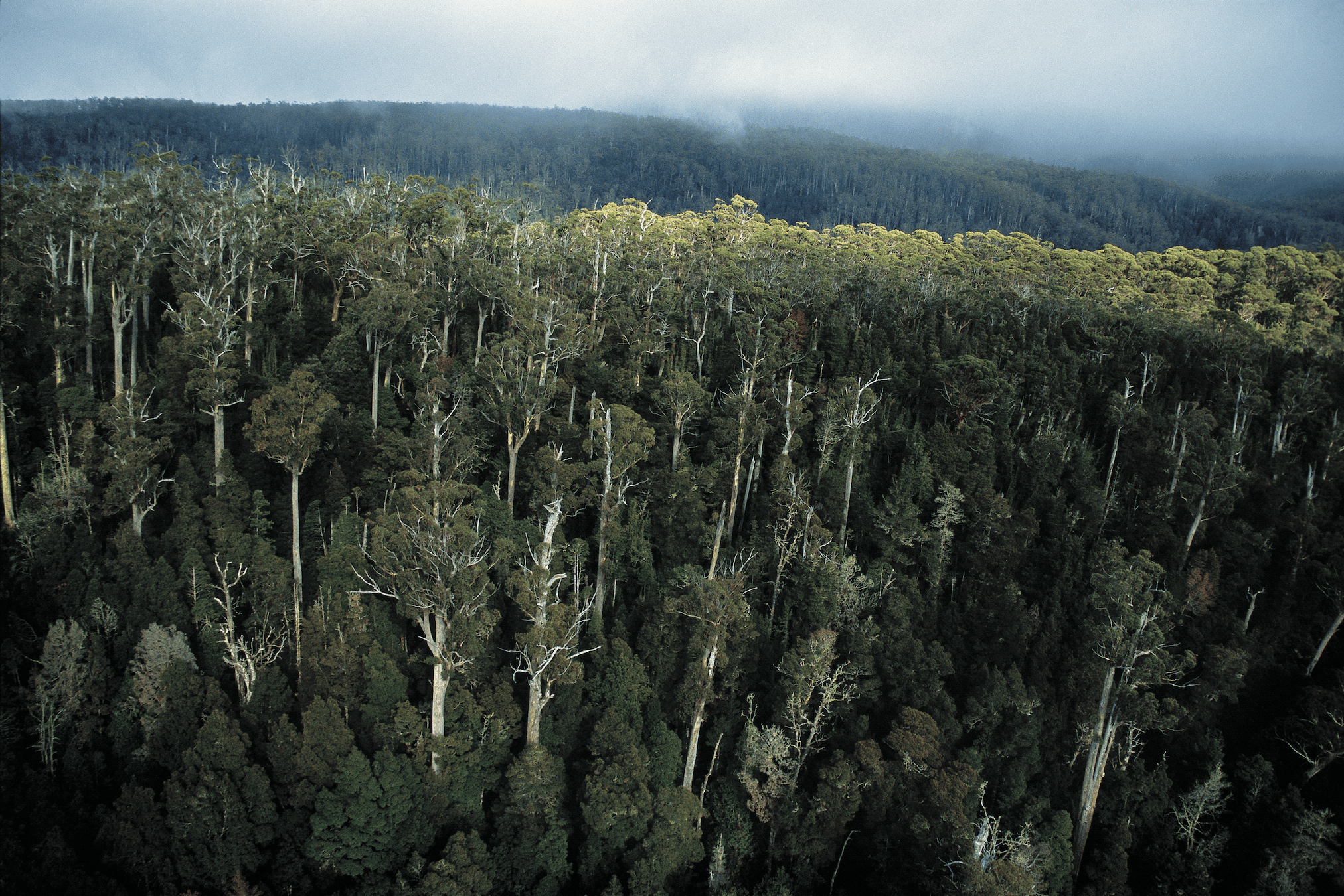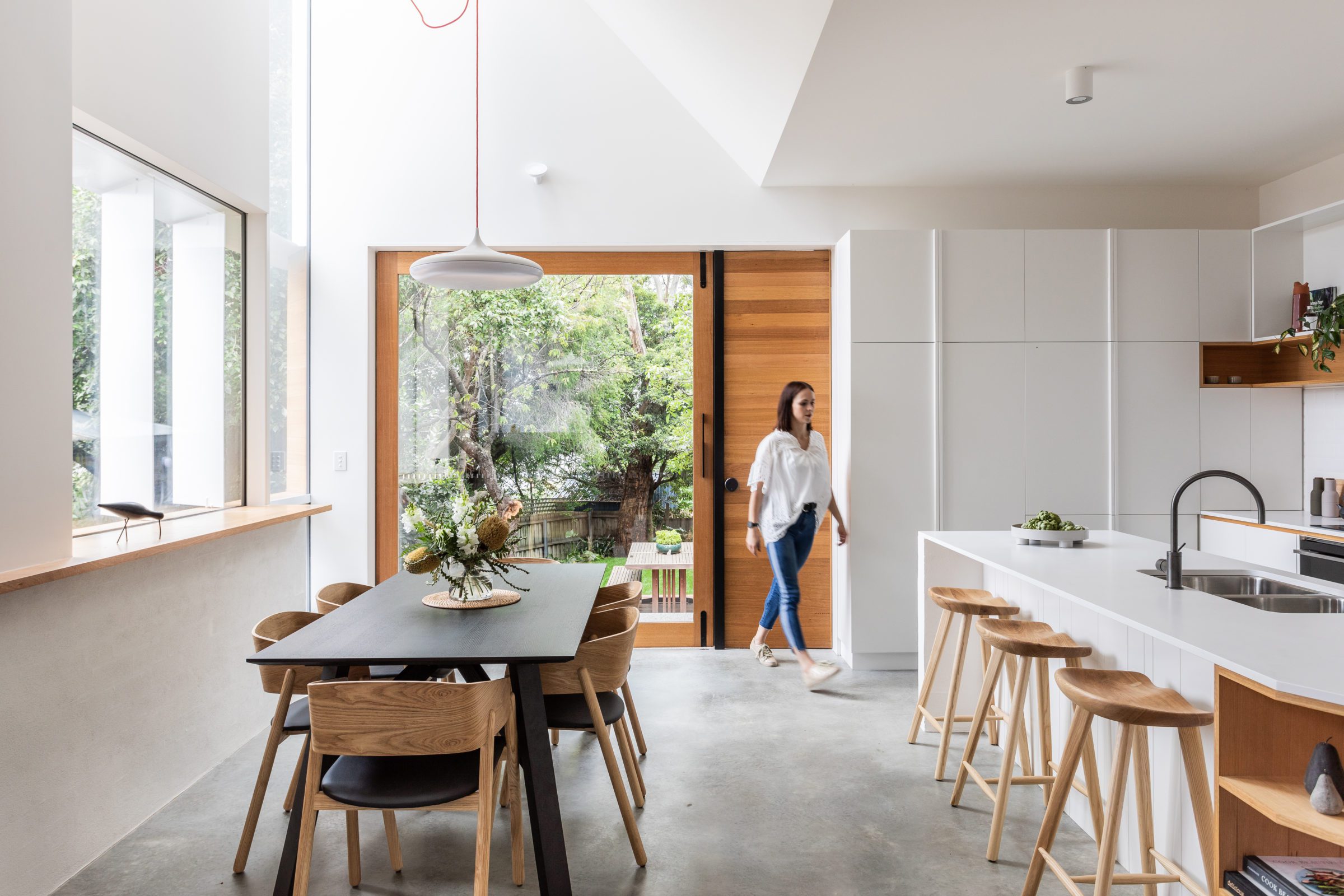Blonde Aussie beauty
With its honeyed golden hues, stability and versatility, it’s no wonder Tasmanian Oak is Australia’s home-grown go-to hardwood. Written by Gabrielle Chariton for HOUSING.
As one of Australia’s most admired native timbers, Tasmanian Oak has been used to build and decorate homes right across the country for more than 150 years. Traditionally, its fine-grained boards were most commonly used for floors or wall linings, but it was also prized for crafting stand-alone pieces, such as cabinets, benches and furniture. In fact, by the 1970s early builders and architects’ interest was growing expeditiously because of Tasmanian Oak’s enduring beauty, strength and workability.
Following rigorous forest regeneration programs, this iconic Aussie timber is now also one of the most sustainable building products around. According to Tasmanian Timber, 100 per cent of what is harvested from public native forests is regenerated, and there are strict caps on how much can be taken.
‘These days there’s only about 120,000–150,000 cubic metres of this native resource cut per annum, so it’s totally sustainable,’ explains Michael Lee, a timber expert and Operations Manager at CLTP Tasmania.
Harvesting practices are environmentally responsible, certified and accountable: the internationally recognised Australian Forest Certification Scheme (AFCS) requires compliance with AS4708 (for forestry growers) and AS4707 for Chain of Custody (forest to consumers), ensuring a constant supply of this beautiful timber for future generations.
Under these strict forestry management practices, Tasmanian Oak is continuously harvested for year-round availability and can be specified with confidence.
Tasmanian Oak is a high to medium density timber which is sourced from three almost identical species of eucalypts: E. delegatensis, E. regnans and. E. obliqua. It was named by early European timber workers who believed these eucalypts showed the same strength as the mighty English Oak. It also shares the oak’s pale, straw-toned colouring – something that makes it unique among Australian hardwoods, which generally play into the darker end of the spectrum.
‘It’s blonde, it’s got some beautiful variegated colour tones but in the lighter end,’ Michael says. ‘It’s the only true Australian timber that has that colour palette.’
Ranging from pinky-russet through to pale gold, on looks alone Tasmanian Oak has become a favourite with residential builders, architects and homeowners. Its warmth, refined grain patterning, and biophilic appeal offer endless design opportunities; this is a timber that can effortlessly elevate all styles of architecture with its timeless aesthetic.
Tasmanian Oak can be used in all forms of construction. However, its inherent strength and good looks are complemented by high workability, and it is most commonly specified for use in appearance applications: flooring, wall and ceiling linings, stairs, window and door framing, mouldings, decorative screening, cabinetry and furniture. It is also used as decorative veneers for these applications as well as large scale commercial projects.
‘It’s light, easy to use and easy to work,’ Michael says, making it the perfect choice for intricate or detailed joinery projects. ‘The machinability levels on it are extremely high. There’s nothing else like it.’
Builders are increasingly turning to Tasmanian Oak for its ability to deliver an exceptionally high quality of finish. Its surfaces are true and clean with an even end-grain, it holds edges well and is readily worked to a smooth, lustrous surface. Most finishes adhere very well, and, if needed, it takes a stain beautifully.
Another defining feature of Tasmanian Oak is its stability. ‘It will do what timber does, so if you subject it to extremes, like any timber, it will react – but by and large it’s very stable.’
Michael adds that thanks to the stringent quality assurance procedures on Tasmanian timbers, all product coming from the state’s major suppliers enters the national marketplace at the right moisture content, with the right quality and grade. For the end user, this translates to a reliable, predictable material that eliminates the guesswork that can sometimes occur when working with timber.
‘It does exactly what you think it’s going to do,’ he says. ‘It just sits nicely, it’s less prone to internal and surface checking, so it’s a very consistent product.’
Historically, Tasmanian Oak has been the preferred choice for flooring in Australian homes, and chances are we’ve all crossed over its golden boards at one time or another.
‘A large percentage of Victorian homes were floored in Tasmanian Oak during the 1970s – and it’s still there,’ Michael says. ‘The exposed floors you’re now seeing in these renovated houses are Tas Oak.’
The fact that so many of these floors remain as beautiful and serviceable as the day they were installed is testament to the timber’s endurance and stability. ‘I’ve done inspections on Tas Oak floors for over a decade…and I couldn’t put my finger on one where we’ve seen a failure that was caused by the timber properties, it has always been caused by an external force or improper laying.’
Many of the accredited Tasmanian suppliers now offer a range of innovative flooring products that allow builders and architects to capture the varied beauty and durability of Tasmanian Oak, while meeting every client’s price point and aesthetic preferences. These include standard strip boards, overlay, pre-finished engineered boards and parquetry.
In terms of structural applications, Michael says the newly released Tasmanian Oak Glue Laminated Timber (GLT) products, such as beams, columns and trusses, offer builders unprecedented design versatility. Made from timber offcuts, GLTs are cost-effective, as light and workable as regular timber, but offer superior strength and allow for curves and wide spans. CLTP Tasmania has also recently introduced a Plantation Grown Hardwood Cross Laminated Timber (CLT). These high strength engineered components are made from pulp material and woodchip in an effort to reduce wastage and maximise the value of every tree that is harvested.
Locally grown, sustainably sourced, a pleasure to work with and offering lasting beauty across numerous applications, Tasmanian Oak is one of Australia’s greatest natural resources, and one that is set to remain a perennial favourite with homeowners, architects and builders alike for years to come.
This article was compiled with contributions from Tasmanian Timber.

















